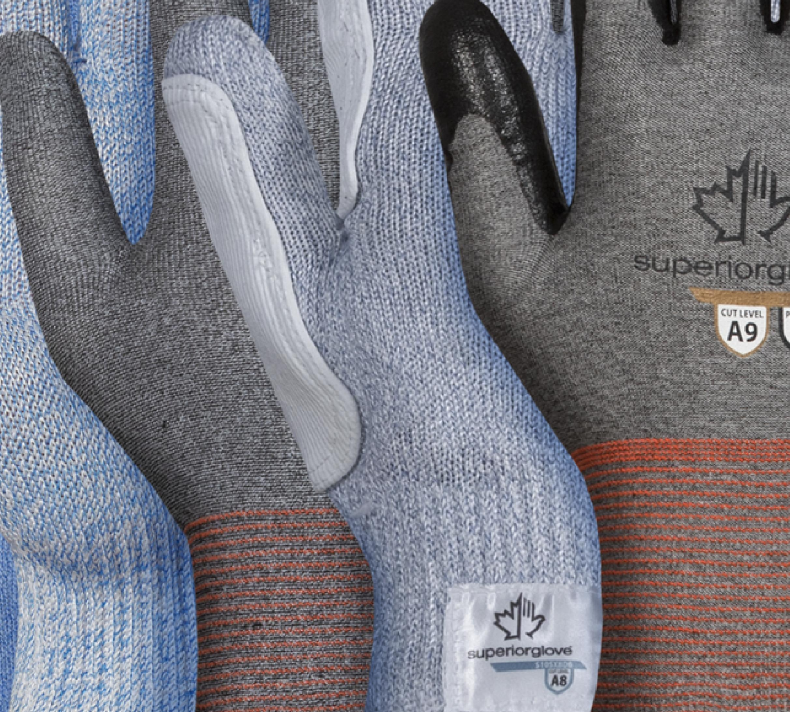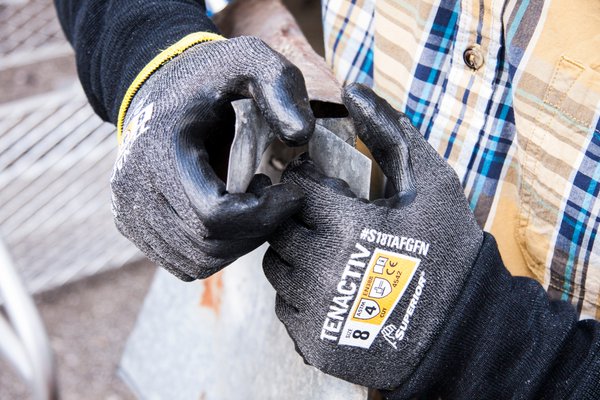Protect Your Hands From Lacerations
Cut-Resistant Work Safety Gloves
You would be hard pressed to find a more common injury in the workplace than those to industrial workers' hands. In a U.S. Department of Labor Study, of all injuries reported, injuries to fingers and hands accounted for more than 23% - making them the highest in preventable workplace injuries.
One of the easiest ways to prevent cut injuries, or to at least reduce the severity, is to make sure you are wearing the correct hand protection.
LEADING GLOVE DESIGNERS
The glove engineers at Superior Glove®, Majestic® Glove, Wells Lamont, Portwest®, SHOWA® Glove and Protective Industrial Products (PIP®) have a full line-up of first-class cut-resistant gloves designed to help you do just that.
Which Type of Cut I'm Working Against?
In order to properly protect the hands, one needs to understand the nature of the task. There are three types of cuts that gloves are designed to protect you from:
1. Abrasive Cut Hazards
These are very common. A prime example of an abrasive cut is the constant rubbing action of a glove when handling parts with a sharp or jagged edge, eg: sheet-metal stampings or plastic parts.
2. Slicing Cut Hazards
These are characterized by the "slipping" motion of a very sharp edge. Industries where one would work with sharp knives, such as the food-handling industry, are exposed to much of this type of threat.
3. Impact Cut Hazards
These are not as frequent in the workplace as abrasive and slicing cuts, but can happen with a far greater force. An example of this type of cutting accident is being struck by a falling piece of glass or sheet metal. On a smaller scale, impact cuts can happen in the thumb crotch area during the normal course of handling sheet metal or other sharp-edged materials.
Which Material to Choose?
The following are the some of the main materials used to make gloves, listed from poorest to highest cut resistance:
- Leather
- Cotton
- Synthetics
- High Performance (Composite, HPPE, TenActiv, G-Tek, Aramid, Kevlar®, Dyneema®)
- Steel mesh
In choosing your glove material, consider the task you are planning on using it for. If you're performing a task that doesn't require a high cut-resistant glove, then you could go with a cotton blend material. If the job you're doing is dangerous and requires extreme hand protection, your best bet is stainless steel mesh or wire-core for for extreme cut protection.
Which ANSI Cut Level to Use?
Cut-Resistant Work Gloves are rated on what we call the American National Standards Institute (ANSI) standard. The New ANSI/ISEA 105-2016 Ratings will be:
- A1 - ≥ 200 gm., Light Cut Hazards - Paper cuts, automotive maintenance, electronic manufacturing, parts assembly and material handling.
- A2 - ≥ 500 gm,. Light-Medium Cut Hazards - Construction, automotive assembly, packaging and some masonry applications.
- A3- ≥ 1000 gm., Light-Medium Cut Hazards - Light metal stamping, light-duty glass handling applications.
- A4 - ≥ 1500 gm., Medium Cut Hazards - Metal stamping, light sheet metal handling, oil & gas and bottle/glass handling.
- A5 - ≥ 2200 gm., Medium-High Cut Hazards - Metal fabrication, HVAC, plate glass handling, some pulp and paper applications
- A6 - ≥ 3000 gm., High Cut Hazards - Metal stamping, recycling, plate glass handling, some pulp and paper applications
- A7 - ≥ 4000 gm., High Cut Hazards - Heavy metal stamping, plate glass handling, some pulp and paper applications
- A8 - ≥ 5000 gm., High Cut Hazards - Heavy metal stamping, meat processing, plate glass handling, some pulp and paper applications
- A9 - ≥ 6000+ gm., High Cut Hazards - Heavy metal stamping, blade handling, float glass, pulp and paper applications
New Label Old Label
How Cut-Resistant Gloves are Tested
North American Standard (ANSI/ISEA 105-2016):
- The glove sample is placed on a conductive strip and loaded onto the TDM-100. When the metal blade touches the metal strip, the test is terminated.
- A straight blade is loaded into the machine.
- Weight is added to serve as force.
- The blade moves across the fabric.
- The blade is replaced with a new one to ensure accuracy.
- The sample is cut five times, each with three different load.
- The distance traveled to cause cut through at various forces is recorded.
- The data is used to determine the load required to cut through the sample.
- The glove receives a rating based on the above information between A1 and A9, with A1 being the lowest and A9 being the highest level of cut protection.
Understand the cut score ratings so you can make sure you're choosing the correct cut protection for your specific needs. The scale has been increased 5 to 9 levels. They now read from 1-9, replacing the 1-5 scale, to significantly reduce the gaps between levels for better cut protection.
Questions. Orders. Volume Discounts. Sample.
Call or Click Today
Monday – Friday 8:30 – 4:30 Eastern Time
+800.274.4637 | +716.668.4001 | [email protected] | MDSassociates.com




